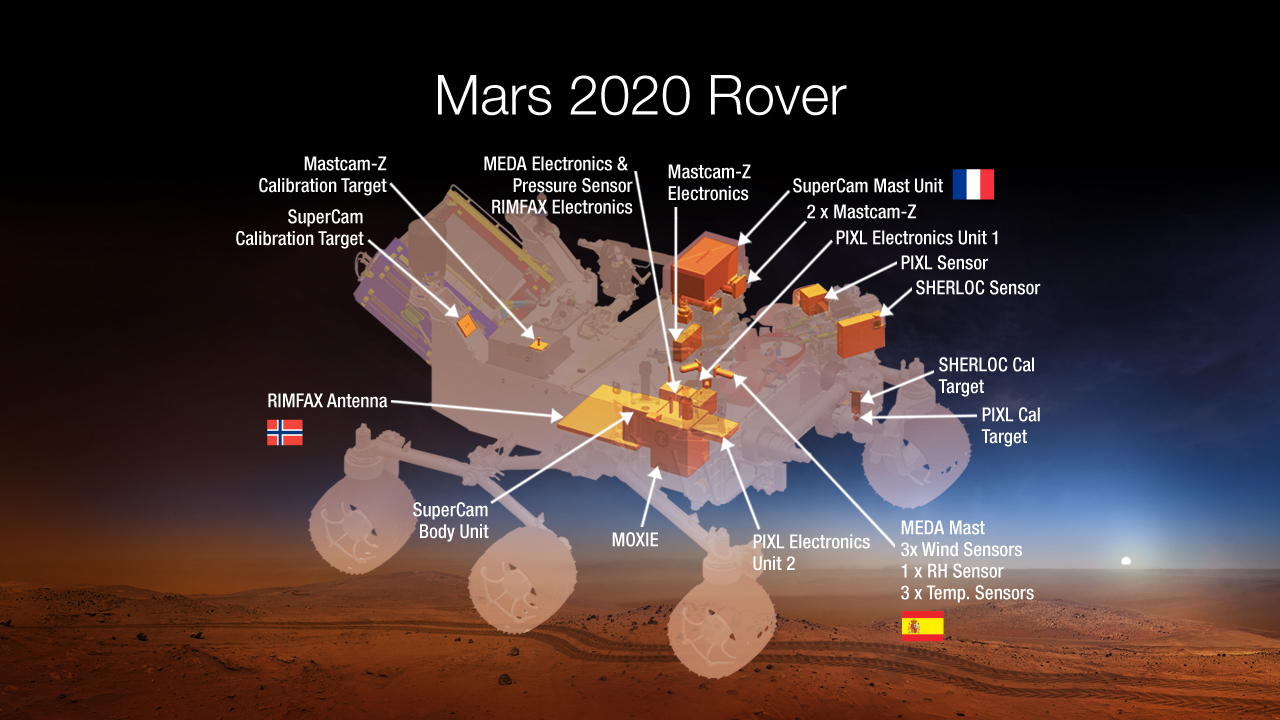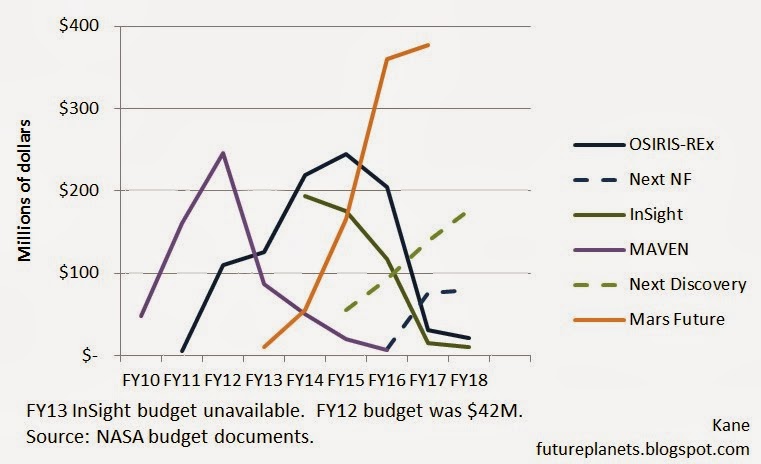Unstung
Active member
A concise history of NASA's upcoming Mars rover is written below.
As of this time, it looks like there may be two rovers scheduled to launch towards Mars in 2020. This means that the ExoMars rover will miss the more favorable 2018 launch window and launch during the same year as NASA's newly conceived rover. Shortly after NASA had to terminate its participation in ExoMars in 2012, it announced a new rover without any of its scientific objectives outlined. Nonetheless, the priority for the rover to cache samples as desired in the Planetary Decadal Survey was maintained, although NASA does not have any plans (or funds, especially) to return core samples from Mars. Whether the rover will hold onto the samples or leave them on the Martian surface after they have been collected is still undecided.
Interestingly, it turns out that NASA is indeed making another Curiosity to some degree. The new mission will borrow the design of the Mars Science Laboratory. This happens to save money on the flagship spacecraft, reducing the cost to an estimated $1.5 billion. Compare that with $2.5 billion for MSL.
The rover's objectives were announced in 2013 and proposals to meet them have been submitted. Among the goals, there's a focus on life detection that hasn't been seen since Viking:
Just a week before this post on July 31, the rover's payload has been announced. Some new instruments have capabilities that are improved over Curiosity (such as stereo zoom cameras), but there is less scientific mass being transported to the surface of Mars. This time, only $130 million will be spent on developing the instrument payload. In total, there are seven scientific instruments that are listed below which have been included in this gallery.

Now the rover can truly start to take shape. As of August, the landing site is still unknown.
{colsp=2}
 |
|

On NASA
On Wikipedia
As of this time, it looks like there may be two rovers scheduled to launch towards Mars in 2020. This means that the ExoMars rover will miss the more favorable 2018 launch window and launch during the same year as NASA's newly conceived rover. Shortly after NASA had to terminate its participation in ExoMars in 2012, it announced a new rover without any of its scientific objectives outlined. Nonetheless, the priority for the rover to cache samples as desired in the Planetary Decadal Survey was maintained, although NASA does not have any plans (or funds, especially) to return core samples from Mars. Whether the rover will hold onto the samples or leave them on the Martian surface after they have been collected is still undecided.
Interestingly, it turns out that NASA is indeed making another Curiosity to some degree. The new mission will borrow the design of the Mars Science Laboratory. This happens to save money on the flagship spacecraft, reducing the cost to an estimated $1.5 billion. Compare that with $2.5 billion for MSL.
The rover's objectives were announced in 2013 and proposals to meet them have been submitted. Among the goals, there's a focus on life detection that hasn't been seen since Viking:
- Goal 1: Determine whether life ever existed on Mars
- Goal 2: Characterize the Climate of Mars
- Goal 3: Characterize the Geology of Mars
- Goal 4: Prepare for Human Exploration
Just a week before this post on July 31, the rover's payload has been announced. Some new instruments have capabilities that are improved over Curiosity (such as stereo zoom cameras), but there is less scientific mass being transported to the surface of Mars. This time, only $130 million will be spent on developing the instrument payload. In total, there are seven scientific instruments that are listed below which have been included in this gallery.

- Mastcam-Z, an advanced camera system with panoramic and stereoscopic imaging capability with the ability to zoom. The instrument also will determine mineralogy of the Martian surface and assist with rover operations. The principal investigator is James Bell, Arizona State University in Tempe.
- SuperCam, an instrument that can provide imaging, chemical composition analysis, and mineralogy. The instrument will also be able to detect the presence of organic compounds in rocks and regolith from a distance. The principal investigator is Roger Wiens, Los Alamos National Laboratory, Los Alamos, New Mexico. This instrument also has a significant contribution from the Centre National d'Etudes Spatiales,Institut de Recherche en Astrophysique et Plane'tologie (CNES/IRAP) France.
- Planetary Instrument for X-ray Lithochemistry (PIXL), an X-ray fluorescence spectrometer that will also contain an imager with high resolution to determine the fine scale elemental composition of Martian surface materials. PIXL will provide capabilities that permit more detailed detection and analysis of chemical elements than ever before. The principal investigator is Abigail Allwood, NASA's Jet Propulsion Laboratory (JPL) in Pasadena, California.
- Scanning Habitable Environments with Raman & Luminescence for Organics and Chemicals (SHERLOC), a spectrometer that will provide fine-scale imaging and uses an ultraviolet (UV) laser to determine fine-scale mineralogy and detect organic compounds. SHERLOC will be the first UV Raman spectrometer to fly to the surface of Mars and will provide complementary measurements with other instruments in the payload. The principal investigator is Luther Beegle, JPL.
- The Mars Oxygen ISRU Experiment (MOXIE), an exploration technology investigation that will produce oxygen from Martian atmospheric carbon dioxide. The principal investigator is Michael Hecht, Massachusetts Institute of Technology, Cambridge, Massachusetts.
- Mars Environmental Dynamics Analyzer (MEDA), a set of sensors that will provide measurements of temperature, wind speed and direction, pressure, relative humidity and dust size and shape. The principal investigator is Jose Rodriguez-Manfredi, Centro de Astrobiologia, Instituto Nacional de Tecnica Aeroespacial, Spain.
- The Radar Imager for Mars' Subsurface Exploration (RIMFAX), a ground-penetrating radar that will provide centimeter-scale resolution of the geologic structure of the subsurface. The principal investigator is Svein-Erik Hamran, the Norwegian Defence Research Establishment, Norway.
Now the rover can truly start to take shape. As of August, the landing site is still unknown.


Money for the rover will free up near the launch date.
|
This is the initial idea for storing core samples.
On NASA
On Wikipedia
Last edited:

 s. We already have more than enough information from the hundreds of
s. We already have more than enough information from the hundreds of 


